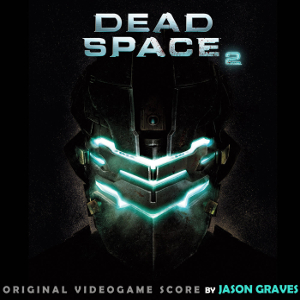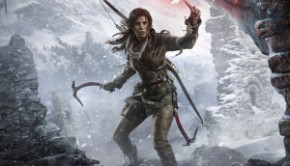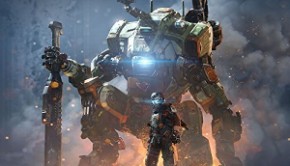Dead Space 2 Original Videogame Soundtrack
 |
Album Title: Dead Space 2 Original Videogame Soundtrack |
| Record Label: Electronic Arts |
|
| Catalog No.: N/A |
|
| Release Date: January 25, 2011 |
|
| Purchase: Download at iTunes |
Overview
Jason Graves’ soundtrack for Dead Space had turned many heads in 2008 with its uncompromising avant-garde stylings that made for a challenging, but nonetheless fascinating listening experience. A number of awards, among them two BAFTAs, followed soon and the title turned out to be the work that propelled score veteran Graves into the first league of game composers.
Of course, all this critical acclaim raised the stakes for the sequel’s score, Dead Space 2, and turned it into one of the most anticipated soundtrack releases of 2011. Fortunately, the game’s developers were aware of the contribution that the aural backdrop had made to Dead Space‘s terrifying atmosphere and brought Graves on board 18 months before the game’s release. In actual fact, recording sessions started even before the game had been green-lit. Dead Space 2 was again recorded at Skywalker Sound, but this time also included recordings of string quartet material — an indication of the new stylistic direction into which Graves was taking the franchise’s music. Similar to the original game, about three hours of music were recorded. Reflecting the increased interest in Dead Space 2‘s music, its score was released in two different versions: a digital album release and a physical CD that came with the game’s collector’s edition. Both releases feature substantially different track listings and contain about 25 minutes of exclusive material. This review refers to the digital album release.
Body
“The Same. But Different. Yet Better.” According to Graves, those are the words that printed out over his monitor when composing Dead Space 2. And it’s safe to safe to say that he has achieved all three of these goals. Graves’ score is unmistakably the soundtrack for a very scary game. But at the same time, it substantially tweaks the terrifying sounds of Dead Space. And through a more varied approach to creating unease and immersion, Dead Space 2 clearly surpasses the first game’s score. That soundtrack’s biggest problem was the fact that it usually applied just one technique to strike fear into listener’s hearts: a relentless assault of impressively dissonant and complex orchestral sounds. Dead Space 2 bring more facets to its exploration of the dark corridors of both a haunted space station and of the game’s protagonist’s disintegrating mind.
Most importantly, Dead Space 2‘s score features a lot more contrasts than its predecessor and thus creates much greater conflict and drama, or as Graves put it: “It’s the tonal versus the non-tonal, the calm versus the chaos.” Graves doesn’t waste any time in highlighting this delineating factor between his two Dead Space scores. The opening track “Welcome To The Sprawl” opens with the mournful sounds of a string orchestra, probably the last thing fans of Dead Space‘s often thunderous compositions would have expected. Graves is just as strong in composing for this much more intimate ensemble as for large orchestra and the fragile intertwining violin melody lines, underpinned by a two-note viola ostinato motif, are immediately ear-catching. Initially, the piece’s harmonic language is relatively conventional, but the music soon turns more eerie, tonality disintegrates, until the composition explodes into a massive orchestral dischord. And while Dead Space boasted more than enough of such dissonances, these outbursts actually have a bigger impact on Dead Space 2, simply because they don’t occur constantly and take the listener by surprise. It also helps that this time, the quiet sections that precede the orchestral fury actually keep the listener on the edge of their seat, instead of just offering some repose.
The two opposing musical forces that dominate Dead Space 2 are then a number of calmer, yet no less haunting compositions, and those pieces that feature a modified version of Dead Space‘s raucous action material. The most striking feature of the quieter pieces is the aforementioned string quartet, an ensemble rarely used in soundtracks, let alone game soundtracks. Graves deployed the string quartet to underscore protagonist Isaac’s vulnerable side and the greater focus the title puts on his emotional arc throughout the game. The choice turns out to be a perfect fit for the occasion: the string quartet adds a huge amount of emotionality to this score, an ingredient that doesn’t allow the music to wallow in sentimentality. This danger is not only averted by the string quartet’s naturally leaner sound. Graves’ writing for string quartet (and orchestra) on Dead Space 2 is indebted to composers like Béla Bartók and Igor Stravinsky, both musical innovators of the early 20th century who clearly distanced themselves from the romantic excesses of previous decades. All in all, the sections for string quartet are among the most richly atmospheric on Dead Space 2: they’re emotionally powerful, creepy and touchingly communicate Isaac’s loneliness.
“Canonical Aside” is a striking example of the impact such well-written string quartet music has. Isaac’s new theme and Nicole’s theme, returning from Dead Space, interweave in the dense textures that Graves creates with only four instruments. Despite its undeniably tragic character, the piece retains a certain gritty feeling, also due to a quite dry recording of the instruments that never makes them sound too polished or sweet. Only the cello is a bit too dominant in the mix, but that really is a minor issue. The string quartet appears on more tracks, but the biggest showcase for this ensemble is closing track “Lacrimosa”. The piece is the result of some ‘leftover’ recording time and Graves’ wish to elaborate on the themes present in the soundtrack further. In its original form, “Lacrimosa” was three movement Concerto for string quartet of about eleven minutes, performed for the game’s premiere in London in early 2011. On this album release, the piece is presented in a seven minute version. Essentially a free-flowing suite of themes from the soundtrack, “Lacrimosa” is more jagged and atonal than earlier pieces, creating a hushed, ghostly atmosphere that fascinatingly remains emotionally accessible, but still feels “off” through its lack of a clear tonal base. On the collector’s edition release “Lacrimosa” ends in a whirl of dissonances, but here the piece ends on a more consonant and doleful note which is pleasing, but also less exciting than the collector’s edition version. And the last outburst of dissonance at the very end feels like a cheap horror movie cliché. Still, “Lacrimosa” is one of the most challenging and rewarding game score pieces of recent memory and demands repeat listen like few other score compositions.
While the more atmospheric portions of Dead Space were rather non-descript, here these passages can not only stand on their own, but are actually mesmerising and retain a sense of eeriness so that the listener’s attention never flags. Key to this are more colourful orchestrations here. “Cassini Towers” only requires solemn, echoing percussion hits to communicate the idea of a vast, dark space, before vocal elements intensify the music’s unsettling mood. Disembodied choir sounds and whispered, indistinguishable words uttered from a close distance create a sense of tangible, yet uncontrollable dread that erupts into a violent orchestral two-note figure and slurred brass motifs.
Here as on “It Had To Be Unitology”, the simple sounds of tolling bells added to the orchestral palette are fascinating and enigmatic, particularly when presented in such creative instrumental combinations as is the case here. The bells’ portent strikes are especially effective when they’re combined with an incisive, nervy violin ostinato figure at the midway point of “It Had To Be Unitology”. “Say Hello To My Little Friends” plays with equally minimalist, but effective elements when it opens with an innocent, but forlorn xylophone melody against an unsettling background drone. Unfortunately, the build up of tension isn’t quite as effective here as it is on the collector’s cdition version of the piece and the cue segues into rather unremarkable ostinato string and percussion rhythms.
These engrossing stretches of relative calm form a foil against which the frenzy of Dead Space 2‘s action pieces can unfold all the more effectively. Reflecting the fact that this time, Isaac is more in control than in the first game, the action tracks here are less chaotic and more rhythmically focused than before. While Dead Space‘s music often created a head-spinning effect by going in several directions at once, here the piece’s rhythmic foundation is more dominant, steady and gives the music a recognisable forward drive. As a result, the action pieces cause less sensory overload, but still retain their bite.
These new stylings are first heard during the second half of “Welcome To The Sprawl” when the string sections play a dissonant figure unisono — unheard of on Dead Space — over the percussion’s pounding rhythms, not against them. Some listeners will miss Dead Space‘s dizzying flurry of dissonances, but these new action tracks are less tiresome in the long run. With their less crammed textures, these compositions also give details such as that acerbic string figure on “Welcome To The Sprawl” more space to work their effect. And the sheer force of the splendidly recorded rhythms on most action tracks is easily arresting enough to make these compositions a winner. It’s safe to say that Graves was probably influenced by the barbaric rhythms of some of Stravinsky’s works when composing these propulsive cues.
There are two new stylistic features to the battle cues on Dead Space 2 that were nowhere to be found on Dead Space: the reliance on ostinato elements and harmonically pleasing, dramatic brass chord progressions. “Nice R.I.G. If You Can Get It” highlights the new importance of repetitive figures when its opening focuses on a rhythmically pronounced string ostinato figure and an insisting percussion line. The piece builds then by piling more such ostinato figures on top of each other, but they don’t battle each other, but rather add complexity while never deluding the forward motion of the piece. Don’t get this wrong though: this is not a horror version of a Remote Control film score. The dense syncopated rhythms of “Awesome Hulk” and “You Got Nill” create a thick rhythmic bed that will be difficult to penetrate on first listen, but is also never disorienting. It also bears mention that the action tracks on Dead Space 2 don’t power all the way through, but skillfully build up and release tension. “Awesome Hulk” starts with a string quartet rendition of Isaac’s theme and and then segues into aleatoric pizzicati over increasingly brazen brass chords, while “You Got Nill” plunges into abysmal darkness inhabited only by drifting female vocals, deep growling sounds and spacious, hollow-sounding orchestral layers.
The album’s last two action tracks, “I Only Have Eyes For You” and “You Got To My Head”, are noteworthy for the way they lead up to the soundtrack’s dramatic conclusion. Instead of making the music still denser and louder, Graves writes two pieces that are considerably starker and more abstract than previous cues. In their focus on hammering, only sparsely accompanied rhythms, these compositions are a more cerebral affair that won’t please everybody, but perfectly fit the envelope-pushing nature of the soundtrack in general. Particularly “You Got To My Head” slows the previously pulsating rhythms down to a degree that they no longer function as driving elements for action music. Instead, they give the music a blasted, unforgiving feeling. These impressively well-developed, longer action pieces are a crowning achievement in Graves’ career and are only available on Dead Space 2‘s digital release.
As hinted at above, Dead Space 2 is also thematically richer than its predecessor. Firstly, there’s a theme for Isaac, the game’s tragic hero. To communicate how Isaac’s actions are linked to his memories of Nicole which still haunt him, Isaac’s theme is a simple motif consisting of the notes D-E-A-D — because Nicole’s dead. It’s not a subtle concept, but the minoric theme brings across Isaac’s loneliness and suffering very well. The theme also provides the soundtrack with its most fragile and touching moments on tracks like “Welcome To The Sprawl”, “Canonical Aside” and “You Got To My Head”. On several cues, Isaac’s theme fittingly intertwines with Nicole’s disconsolate theme from the original Dead Space. Given that they’re rather similar in nature, the two themes are not so much juxtaposed on “Canonical Aside” and “You Got To My Head”, but rather work hand in hand to increase the emotional impact of the score even more.
The use of these two themes is taken to an emotionally and intellectually satisfying conclusion on penultimate track “Come Rain Or Come Convergence”. Here, Nicole’s theme is restated before segueing into a fierce orchestral climax similar to those on Elliot Goldenthal’s score for The Spirits Within. The harp material from the original Dead Space, where it had been associated with Nicole, returns. But since Isaac has finally gotten rid of those tormenting visions of Nicole, it’s his theme that’s stated then on warm solo piano and dominates the piece from here on. The theme is soon surrounded by lush orchestral material that provides the soundtrack’s most pronounced moments of conventional harmonic beauty — there are even some melodic woodwind soli. But keeping in tune with this score’s perpetually downbeat demeanour, the orchestra dies away, leaving the lonely piano to play Isaac’s theme against a backdrop of encroaching, whining string dissonances.
The score’s third major theme is a motif of four descending chromatic notes for the Marker, the alien artefact at the root of all the evil perspiring in both Dead Space titles. Graves plays this theme off against Isaac’s theme on several occasions, with both motifs constantly at battle with each other. But the Marker theme also takes on a life of its own, particularly on the action tracks towards the end of the album like “Awesome Hulk” and “You Got Nill”, where its descending four notes performed by mighty brass add gravitas and drama to the busy orchestral proceedings.
Summary
Dead Space 2 delivers upon the promise Graves had shown on Dead Space, and then some. The score is a mesmerising creation, by turns moving, frightening and forceful. Graves’ decision to use greater restraint than on the constantly pounding predecessor pays off in spades. Instead of being bogged down by too much repetition, Dead Space 2 is a fascinating, richly atmospheric journey into the darkness. Experiments like the use of a string quartet turn out to be hugely successful and imbue the score with just the right amount of emotionality for the listener to care about the story and the characters that the music is describing. While the action material is less awe-inspiringly bewildering than on Dead Space, it’s no less effective in its more focused, stripped-down nature. More than anything else, Dead Space 2 achieves something that its predecessor didn’t: to build up unrelenting tension that carries through the whole album and never flags.
Is this digital release of Dead Space 2 the score’s definite version? Not really: it has a better album flow than the collector’s edition release, with a greater number of longer tracks that develop satisfyingly. The collector’s edition album, on the other hand, features many tracks that are rather short, but very efficient, vignettes. Also, the collector’s edition version doesn’t feature some of the digital release’s more experimental material and is thematically less dense. However, the collector’s edition album is a more visceral listening experience, due to a greater number of true shock moments and the absence of the digital release’s more abstract pieces. Both versions have their own merit and avid Dead Space fans will have to piece together material from both releases to create the definitive listening experience. But no matter in what version, Dead Space 2 remains a work that is to be lauded for its innovation and its profound impact.
Do you agree with the review and score? Let us know in the comments below!
4.5
Posted on January 25, 2011 by Simon Elchlepp. Last modified on June 4, 2014.














